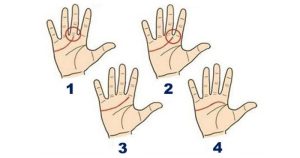When the COVID-19 crisis began, experts expressed concern that rates of substance abuse and overdose cases could increase due to the circumstances of the pandemic. In addition to the anticipated increase in substance abuse as a coping response to the psychological stress related to the pandemic, experts pointed to potentially exacerbating factors such as increased social isolation, financial distress, and disruptions in treatment access.1
Accumulating evidence indicates that those early concerns were well-founded. For the 12-month period ending in May 2020, the Centers for Disease Control and Prevention (CDC) reported 81,000 drug overdose deaths — the most ever recorded in a 12-month period in the United States.2 Synthetic opioids — especially illicitly manufactured fentanyl — appear to be the main driver of these increasing rates, with a 38.4% increase in the number of associated deaths compared to the previous 12-month period.
Additionally, the CDC reported that overdose deaths attributed to cocaine and psychostimulants such as methamphetamine increased substantially in the recent 12-month period (by 26.5% and 34.8%, respectively).
These findings align with those of a study that examined newer patterns of drug testing results compared to pre-pandemic patterns.3 Among 881,134 specimens, positive test results for non-prescribed fentanyl increased by 35%, and positivity for heroin increased by 44% after the pandemic began. The results also demonstrated drastic increases in positive results for non-prescribed fentanyl among patients who tested positive for amphetamines (89% increase), benzodiazepines (48%), cocaine (34%), and opiates (39%; P <.01 for all comparisons>

“We do know that overdose deaths were already increasing at the end of 2019, and these increases were largely attributed to illicitly manufactured fentanyl,” said Danielle F. Haley, MPH, PhD, assistant professor in the department of community health sciences at the Boston University School of Public Health. Along with Richard Saitz, MD, MPH, Dr Haley co-authored an editorial on the topic that was published online in September 2020 in JAMA.4
While the ability to confirm emerging statistics on overdose-related mortality is limited by the lack of real-time national reporting on these incidents, the “CDC report suggests that overdose deaths have accelerated even further during the pandemic,” Dr Haley told us in an interview.
Other recent data support these trends, including a study published in December 2020 in JAMA Psychiatry which showed a national surge in overdose-related cardiac arrest in the initial months of the pandemic, with peak rates in May 2020 that were more than 2 times greater than the baseline rates from the 2 previous years.5
Noting that emergency medical services (EMS) data represent a source of near-real-time information to track these developments, the investigators analyzed data from the National EMS Information System (NEMSIS) to examine overdose trends during the pandemic. The registry includes data from more than 10,000 EMS agencies nationwide, and the 2020 database represents roughly 26 million EMS activations.
The results demonstrated a sharp increase in overdose-related cardiac arrests during April 2020, with rates that were 123.4% above baseline (the weekly average of 2018 and 2019 rates) by May 4. By July 27, the rates had declined but remained 53.7% above baseline rates.
Similar increases have been reported on the state and municipal level. For example, there was a 50% increase in EMS runs for suspected opioid-related overdose deaths in Kentucky during the weeks following the COVID-19 state of emergency declaration, and a 47% increase in overdose deaths in Indianapolis after the stay-at-home issue was implemented (and rates remained elevated even after the order was lifted).1,6
As many individuals struggle with the social and economic aftermath of the pandemic, likely contributing to increases in drug and alcohol abuse as coping mechanisms, we have also “seen a disruption in social safety nets, such as the closure of soup kitchens and suspension of traditionally in-person support programs such as Alcoholics Anonymous or Narcotics Anonymous,” Dr Haley explained.
“There have also been changes in access to health care, such as closure of physician offices providing buprenorphine, a proven treatment for opioid use disorder that may support people in treatment and recovery.” She further points the potential role of changes in the flow and supply of illicit drugs, which may lead to increasing fentanyl use in response to heroin shortages, for example.
Along with worsening the ongoing opioid crisis in general, these various trends are likely to widen existing racial and socioeconomic disparities in the absence of effective intervention. “There has been a historic failure to deliver effective treatments for opioid use disorder, despite long-standing evidence of efficacy, in the absence of the additional burden COVID-19 has placed on US health care infrastructure…, [and] …the introduction of policies alone will be insufficient to mitigate the effect of the COVID-19 pandemic on overdoses,” wrote Haley and Saitz.4
To expand access to effective treatment and ultimately address the wider underlying disparities, a range of comprehensive approaches are needed. These include “mandating naloxone prescriptions for appropriate patients, eliminating caps on the number of patients who can be treated by a prescriber, expanding community outreach, social services, and telemedicine,” as well as greater initiation of medication treatment for patients with opioid use disorder upon discharge from the emergency department.4
References
1. Slavova S, Rock P, Bush HM, Quesinberry D, Walsh SL. Signal of increased opioid overdose during COVID-19 from emergency medical services data. Drug Alcohol Depend. 2020;214:108176. doi:10.1016/j.drugalcdep.2020.108176
2. Overdose deaths accelerating during COVID-19. Centers for Disease Control and Prevention. https://www.cdc.gov/media/releases/2020/p1218-overdose-deaths-covid-19.html. Published online December 17, 2020. Accessed online February 9, 2021.
3. Niles JK, Gudin J, Radcliff J, Kaufman HW. The opioid epidemic within the COVID-19 pandemic: Drug testing in 2020. Popul Health Manag. 2021;24(S1):S43-S51. doi:10.1089/pop.2020.0230
4. Haley DF, Saitz R. The opioid epidemic during the COVID-19 pandemic. Published online September 18, 2020. JAMA. 2020;324(16):1615–1617. doi:10.1001/jama.2020.18543
5. Friedman J, Beletsky L, Schriger DL. Overdose-related cardiac arrests observed by emergency medical services during the US COVID-19 epidemic. Published online December 3, 2020. JAMA Psychiatry. doi:10.1001/jamapsychiatry.2020.4218
6. Glober N, Mohler G, Huynh P, et al. Impact of COVID-19 pandemic on drug overdoses in Indianapolis. J Urban Health. 2020;97(6): 802–807. doi:10.1007/s11524-020-00484-0
This article originally appeared on Psychiatry Advisor





